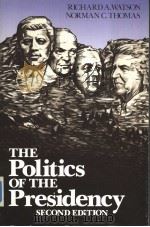《AMERICAN POLITICS THE PEOPLE AND THE POLITY SECOND EDITION》
| 作者 | PETER K.EISINGER DENNIS L.DRES 编者 |
|---|---|
| 出版 | 未查询到或未知 |
| 参考页数 | |
| 出版时间 | 没有确切时间的资料 目录预览 |
| ISBN号 | 无 — 求助条款 |
| PDF编号 | 820553568(仅供预览,未存储实际文件) |
| 求助格式 | 扫描PDF(若分多册发行,每次仅能受理1册) |
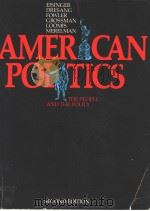
Chapter I Introduction1
The Tension Between Governed and Governors in America2
American Political Traditions and Institutions5
Elections5
The Tradition of Rights5
Checks and Balances5
Majority Rule5
Managing the Tension in Practice8
Chapter 2 The American Political Tradition10
Roots of American Democracy11
America: The Promised Land?11
The American Religious Tradition11
American Scientific Thought13
Was the American Revolution Really Revolutionary?15
The American Idea of Political Power16
The British View of Power17
The American Response18
Guarding Against Executive Power19
Legislative Tyranny?22
The American Conception of Rights23
Origins of the People's Rights24
Rights in the New Country25
Fruit of the Revolution: The Constitution26
Independence and Impotence26
The Constitutional Convention29
Power Reconsidered30
Balancing Power in the Constitution31
The Notion of Rights Reconsidered39
Power and Rights: The Tension Continues42
Conclusion44
Suggestions for Further Reading45
Chapter 3 Political Culture and Socialization46
The Substance of American Political Culture47
Has Political Culture Changed since 1776?48
A Political Culture of Inertia?50
Two Sides of American Political Culture52
The Formal Political Culture52
The Informal Political Culture53
American Political Subcultures55
Black Americans56
American Jews57
Learning Political Culture: Political Socialization and Values61
The Role of the Family61
The Role of the School63
The Role of the Mass Media67
Results of Socialization: Children's Attitudes68
Attitudes toward the President68
Attitudes toward Parties and Voting70
Limitations on Childhood Socialization71
The Dynamics of Political Culture72
Population Movement and Social Mobility72
Changes in Education73
Changes in the Distribution of Occupations73
Changes in Family Patterns74
The Effect of the Mass Media74
The Effect of Political Events76
Conclusion77
Suggestions for Further Reading77
Chapter 4 Federalism79
The Dilemma of Federalism80
The Origins of American Federalism81
The "Great Compromise"82
The Constitutional Basis of Federalism82
The Case for Federalism85
The Role .of the States87
The Dynamics of American Federalism91
National Supremacy versus Dual Federalism92
The Marble Cake of Federalism93
Federalism Today: Increased Sharing94
Factors in Federal Sharing94
Cooperative Federalism: Mostly a Matter of Money96
Coordinating Federal Programs99
From Grants-in-Aid to Revenue Sharing99
Citizen Perspectives on the Federal System102
A Loss of Faith102
The National Government: How "Close" to the People?104
The Future of the Federal System106
Conclusion108
Suggestions for Further Reading108
Chapters Congress110
Congress as a Political Institution111
Committees: The "Little Legislatures"112
Parties and Party Leadership in Congress116
Informal Rules of the Congressional Game119
A New Order: Congress Today120
Enacting Legislation126
The Agenda Stage126
The Committee Stage129
The Scheduling Stage129
The Decision Stage130
The Conference Committee Stage135
The Presidential Stage136
Implications of the Legislative Process136
Legislative Oversight137
Casework: The Ombudsman Function140
The Legitimating Function142
How Citizens View Congress143
Ideas about the Institution144
The Problem of Representation147
Types of Representation148
Representation of Strong Preferences150
Who Should Be Represented?151
Changing Constituents, Opinions152
Representation: Two Case Studies153
Congressional Caucuses: A New Form of Representation?157
Conclusion158
Suggestions for Further Reading158
Chapter 6 The Presidency160
The Presidential Job161
The Constitutional Framework162
The Expanding Presidency163
Presidential Power: Scope and Limits168
International Relations168
Domestic Affairs174
The Presidential Establishment182
The Cabinet182
The Executive Office183
The Vice-President185
The President and the News Media186
How Citizens View the Presidency188
Attitudes Toward Presidential Power188
Declines in the Incumbent's Popularity188
Rallying around the President191
Emotional Attachment to Presidents191
The Character of Presidential Power192
Conclusion194
Suggestions for Further Reading194
Chapter 7 The Federal Bureaucracy195
What is Bureaucracy?196
Advantages of Bureaucratic Organization197
Disadvantages of Bureaucratic Organization199
Structure of the Federal Bureaucracy201
Cabinet Departments202
Other Federal Agencies205
Emergence of the Contemporary Federal Bureaucracy206
Early Principles and Developments207
Recent Reforms210
The Bureaucracy's Role in Policymaking and Policy Implementation215
The Legislative Connection215
Subgovernments for Policy Areas217
How Citizens View the Federal Bureaucracy219
Bureaucratic Inefficiency219
The Bureaucrats220
Citizen Access to the Bureaucracy223
Conclusion224
Suggestions for Further Reading225
Chapter 8 The Legal System226
The Functions of a Legal System227
Types of Law227
What Does the Law Do?227
Law and Politics229
The Culture of American Law231
Constitutionalism231
Legalism231
The Adversary System234
America's Court Systems235
Establishment of the Federal Courts236
The Federal Courts Today236
The State Courts239
State Courts and Federal Courts239
The Participants in our Legal System240
Judges241
Lawyers245
The "People" in the Law251
Who Uses the Legal System?256
How Citizens View the Legal System258
Conclusion260
Suggestions for Further Reading261
Chapter 9 The Supreme Court262
Origins of the Court262
Early Attitudes Toward Judicial Power263
The Court's Political Role263
Judicial Review: The Supreme Court's Basis of Power264
The Supreme Court and Abortion: A Case Study268
The Origins of Roe v. Wade269
Deciding Roe v. Wade271
The Aftermath of Roe v. Wade274
The Supreme Court as Policymaker275
What Cases Does the Court Decide?276
The Supreme Court at Work279
The Justices of the Supreme Court281
Explaining the Court's Decisions285
The Role of the Law285
The Role of Interest Groups285
The Justices' Attitudes and Backgrounds287
Group Influences on Judicial Decisions289
The Impact of the Court's Decisions292
Limits on the Court's Reach292
Effects of Court Decisions295
How Citizens View the Supreme Court296
What Does the Public Know about the Court?296
Who Supports the Court?297
The Influence of Public Opinion298
Conclusion299
Suggestions for Further Reading300
ChapterlO Elections301
The Electoral Process302
Why So Many Elections?303
Features of American Elections305
Who Votes?309
influences on Voter Turnout310
The Current Drop in Turnout312
Who Runs for Office and Why?314
A Look at the Candidates315
Advantages of Incumbency316
Obstacles to Representativeness318
Campaigning: What Does It Really Accomplish?318
How Citizens View the Electoral Process321
Public Support for Elections321
The Influence of Partisanship322
Candidate Orientation326
Qualifies of a Good Candidate326
The Influence of Issues328
Campaigning for President330
The Effects of Campaigns on Election Outcomes334
The 1980 Election335
The Changing Electorate337
Conclusion338
Suggestions for Further Reading339
Chapter 11 Political Parties340
What Parties Do342
Selecting Candidates342
Conducting Campaigns344
Posing Policy Alternatives345
Some New (and Renewed) Party Roles347
What is a Political Party?350
The Party in Government351
Chief Executives: Restrained Partisans352
Parties in the Legislature354
The Party in Government: Accountability355
Party Organization356
The Activists: Who Participates and Why?357
National Conventions360
The Party in the Electorate364
How Citizens View Political Parties366
American Party Systems: Past, Present, and Future367
The Two-Party System and Political Change368
Party Realignments370
Conclusion375
Suggestions for Further Reading376
Chapter 12 Interest Groups377
What is an Interest Group?377
Single-Interest Groups: A Challenge to "Politics as Usual"382
Group Goals, Resources, and Techniques384
Goals384
Resources387
Techniques of Influence392
How Effective Are Interest Groups?399
Citizen's and Interest Groups401
Why Belong?401
A Nation of loiners?402
Who Participates?403
Public Interest Groups405
Oil and Interests: A Case Study408
Resources and Tactics of "Big Oil"408
Opponents of "Big Oil"411
Conclusion412
Suggestions for Further Reading413
Chapter 13 The Making of Public Policy414
What is Public Policy?415
How Policies are Made416
Individuals as Decision Makers416
Groups as Decision Makers418
Institutions, Processes, and Policymaking420
Subgovernments425
The Budget and Policymaking427
Types of Public Policies430
Distributive Policies430
Regulatory Policies430
Redistributive Policies431
Policy Evaluation431
Outputs and Impacts433
The Use of Public-Policy Evaluation434
Conclusion435
Economic Policymaking: A Case Study436
Agenda Setting437
Policy Formation437
Implementation442
Evaluation443
Suggestions for Further Reading444
Chapter 14 Individual Rights446
Rights and the Constitution446
The Bill of Rights and the States448
Is the Bill of Rights Enough?450
Rights in Reality450
Enforcement of Rights453
The Rights of Citizenship454
Equality456
Racial Equality457
Gender Equality464
Freedom of Expression467
Freedom of Speech467
Freedom of the Press472
Freedom of Religion480
The Establishment Clause481
The Free Exercise Clause482
Privacy484
The Rights of Criminal Defendants487
Incorporating the Bill of Rights487
The Exclusionary Rule488
The "Miranda Rule"489
The Right to Counsel490
The Right to a Fair Trial491
Conclusion492
Suggestions for Further Reading492
Chapter 15 The American System and Its Critics494
The Pluralist Interpretation495
Pluralism and Popular Representation495
Pluralism and Popular Control496
Complaints about our Pluralist System497
The Complaint about Elite Rule498
The Complaint That Government Does Not Deliver503
Structural Limitations504
Conflict with Other Values504
Do Citizens Deserve Much of the Blame?506
Popular Misconceptions508
The Irrational Citizen?509
Are Most Citizens Apathetic?510
Conclusion511
Suggestions for Further Reading512
Chapter 16 Alternative Forms of Democracy513
Reform Pluralism514
The Case for Reform Pluralism514
The Case against Reform Pluralism515
Participatory Democracy518
The Case for Participatory Democracy519
The Case against Participatory Democracy522
Too Much "Community"?526
Populism527
Faith in People528
The Value of Leadership530
The Problems of Popular Participation531
The Problems of Strong Leadership533
Democratic Socialism534
The Case for Socialist Democracy534
The Case against Socialist Democracy535
Conclusion537
Suggestions for Further Reading538
The Declaration of Independence539
The Constitution542
Index557
《AMERICAN POLITICS THE PEOPLE AND THE POLITY SECOND EDITION》由于是年代较久的资料都绝版了,几乎不可能购买到实物。如果大家为了学习确实需要,可向博主求助其电子版PDF文件。对合法合规的求助,我会当即受理并将下载地址发送给你。
高度相关资料
-

- THE GOVERNMENT AND POLITICS OF THE EUROPEAN COMMUNITY SECOND EDITION
- 1991 DUKE UNIVERSITY PRESS
-
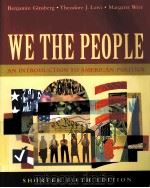
- WE THE PEOPLE AN INTRODUCTION TO AMERICAN POLITICS SHORTER FIFTH EDITION
- W·W·NORTON & COMPANY·NEW UORK·LONDON
-
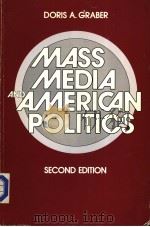
- MASS MEDIA AND AMERICAN POLITICS SECOND EDITION
- A DIVISION OF CONGRESSIONAL QUARTERLY INC.
-
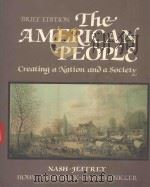
- THE AMERICAN PEOPLE BRIEF EDITION
- 1992 HARPER COLLINS PUBLISHERS
-

- CRAIG ANDERTON'S REVISED & UPDATED HOME RECORDING FOR MUSICIANS
- 1996 AMSCO PUBLICATIONS
-
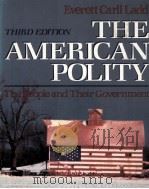
- THE AMERICAN POLITY THE PEOPLE AND THEIR GOVERNMENT THIRD EDITION
- 1989 W.W.NORTON & COMPANY
-

- THE KOREANS CONTEMPORARY POLITICS AND SOCIETY SECOND EDITION
- 1990 WESTVIEW PRESS
-
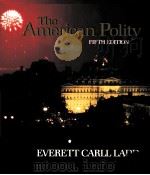
- THE AMERICAN POLITY:THE PEOPLE AND THEIR GOVERNMENT FIFTH EDITION
- 1993 W.W.NORTON & COMPANY
-

- WOMEN AND THE AMERICAN EXPERIENCE SECOND EDITION
- 1994 MCGRAW-HILL
-
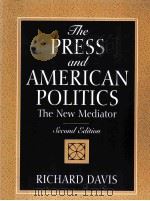
- THE PRESS AND AMERICAN POLITICS THE NEW MEDIATOR SECOND EDITION
- 1996 PRENTICE HALL
-

- THE AMERICAN POLITY READER SECOND EDITION
- 1993 W.W.NORTON & COMPANY
-

- CRIME AND THE AMERICAN DREAM SECOND EDITION
- 1997 WADSWORTH PUBLISHING COMPANY
-
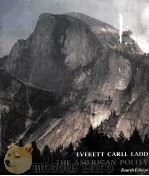
- THE AMERICAN POLITY:THE PEOPLE AND THEIR GOVERNMENT FOURTH EDITION
- 1991 W.W.NORTON & COMPANY
-
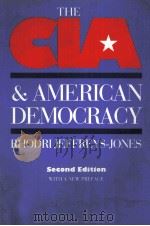
- THE CIA AND AMERICAN DEMOCRACY SECOND EDITION
- 1989 YALE UNIVERSITY PRESS
提示:百度云已更名为百度网盘(百度盘),天翼云盘、微盘下载地址……暂未提供。➥ PDF文字可复制化或转WORD
